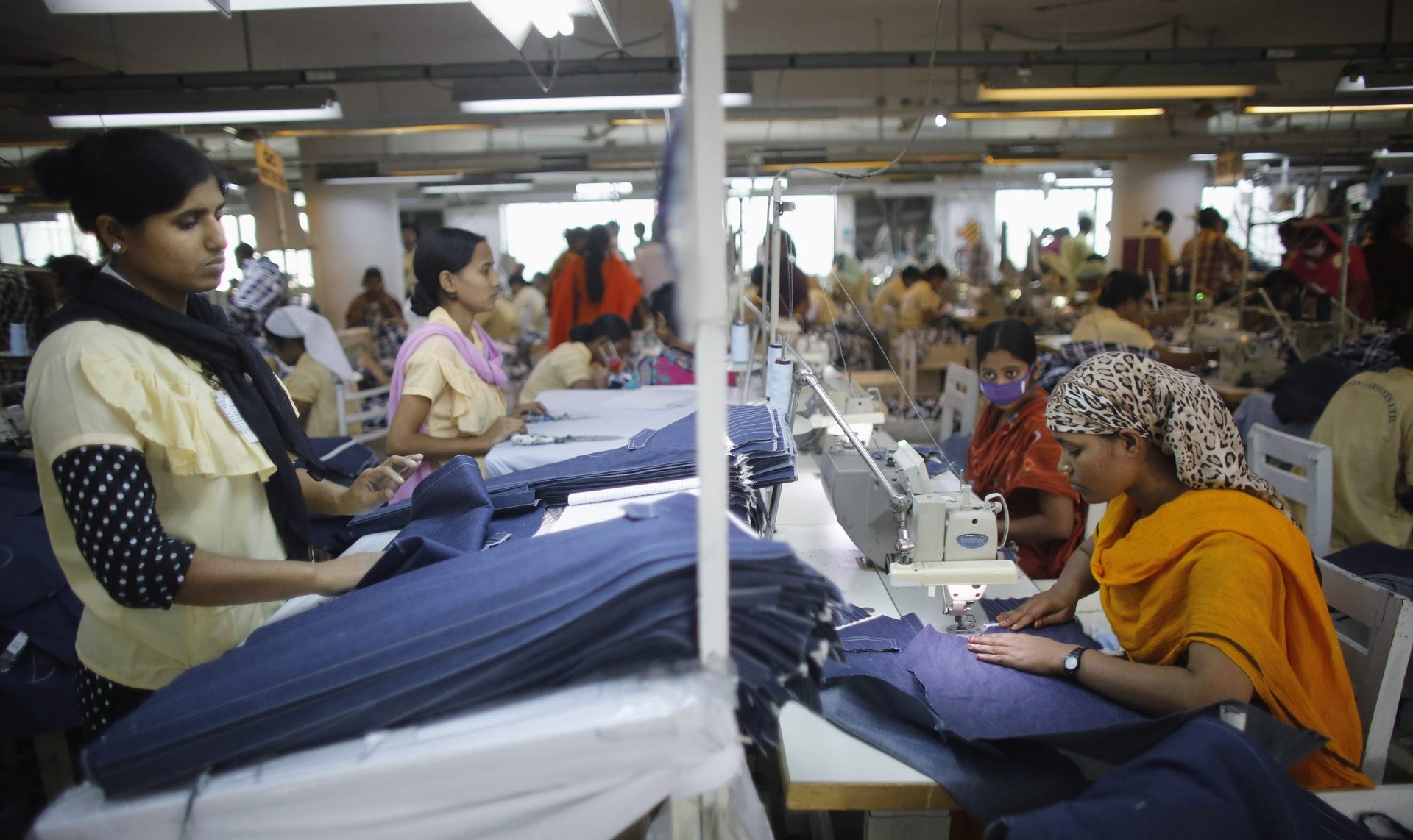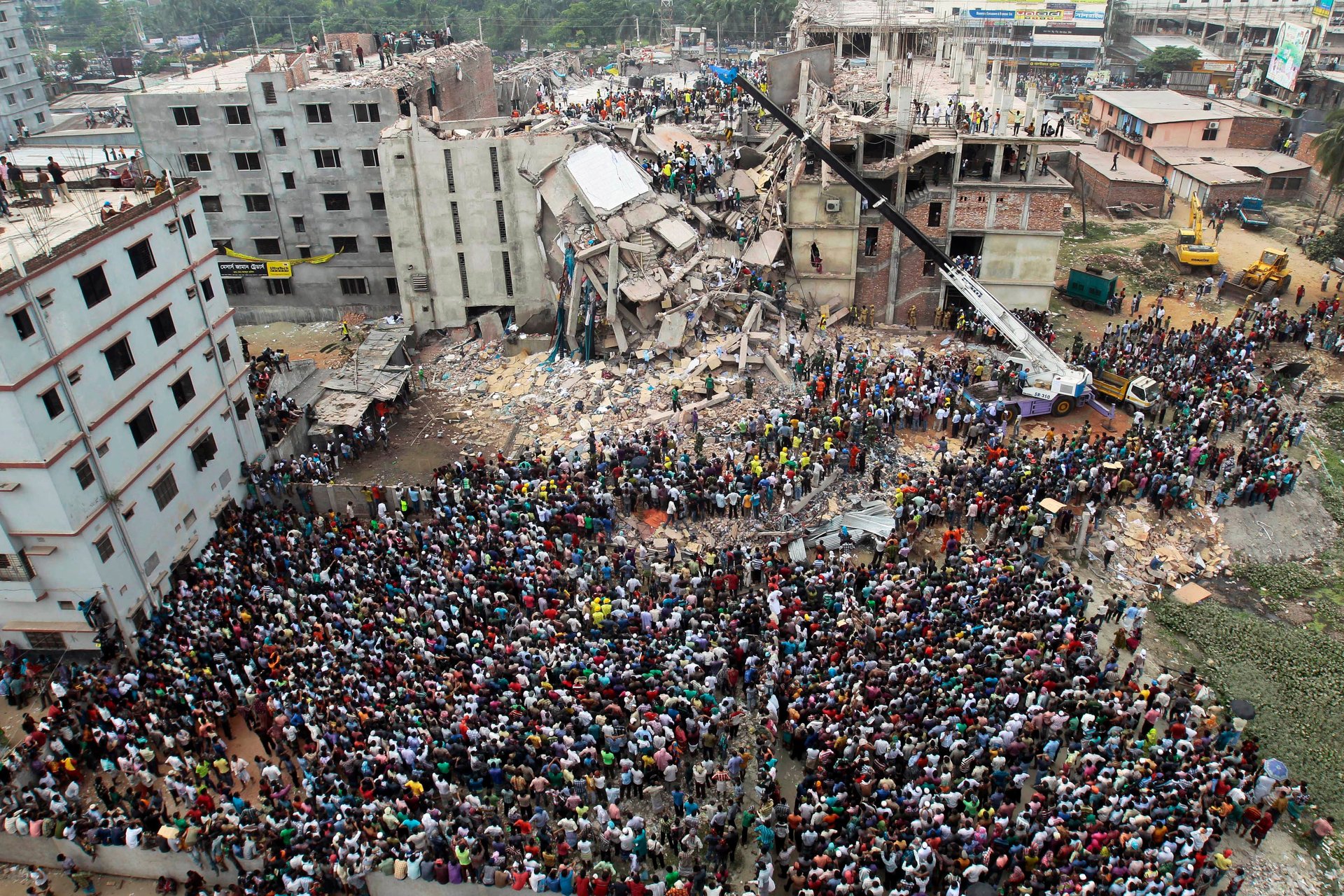The international effort to fix Bangladesh’s deadly factories has a basic math problem
Bangladesh has become the world’s second largest clothing exporter largely because of the incredibly low costs it offers international brands looking to make fashion as cheaply as possible. But the 2013 factory collapse that killed 1,134 people at Bangladesh’s Rana Plaza focused global attention on an industry that routinely prioritized low prices over worker safety.


Bangladesh has become the world’s second largest clothing exporter largely because of the incredibly low costs it offers international brands looking to make fashion as cheaply as possible. But the 2013 factory collapse that killed 1,134 people at Bangladesh’s Rana Plaza focused global attention on an industry that routinely prioritized low prices over worker safety.
H&M, Primark, Zara, PVH (owner of Tommy Hilfiger and Calvin Klein), and many more responded to the disaster—and the bad press it brought—by signing the Bangladesh Accord, a binding agreement with the international unions IndustriALL and UNI Global Union, as well as local unions in Bangladesh, that set a goal of bringing a major portion of the country’s giant garment industry up to safety standards by 2018.
Improvements sometimes started slower than planned. The accord has also been criticized for only covering a portion of Bangladesh’s factories and not addressing some of the most egregious safety violations. Still, significant progress has been made. The task, however, doesn’t simply end once the accord reaches its deadline next year. That’s why the coalition has announced an extension that will expand its work and keep it going through 2021.
But one of the main stumbling blocks to fixing the industry remains: the matter of who pays the bills to install proper fire doors, fix electrical wiring, make sure buildings are structurally sound, and complete other upgrades in a system where low prices and maximum profits drive every decision.
The Rana Plaza tragedy is often held up as a consequence of this environment. Factory owners are engaged in intense competition with one another to get the business of big international clients, and so they offer the lowest prices they can. The tight margins and focus on profit by all involved mean little money is invested in factory safety. In the absence of effective government regulation, off-the-grid factories spring up in crumbling buildings to crank out more clothing even more cheaply. That’s how Rana Plaza happened, and it’s far from the only such tragedy.

The Bangladesh Accord (pdf) tried to account for the issue by stipulating that signatory brands must “negotiate commercial terms with their suppliers which ensure that it is financially feasible for the factories to maintain safe workplaces and comply with upgrade and remediation requirements.” But the open-ended language left it to brands to decide how that would happen, and what prices were high enough. At the same time, the accord’s signatories don’t include factory owners themselves, who ultimately must swallow the expense of maintaining safe work spaces.
While the accord’s new extension (pdf) offers workers important new protections, such as rights to unionize, it still doesn’t address these issues. “Companies and unions negotiated without the factory owners, who are the ones who bear the responsibility and cost of implementing the Accord’s requirements,” says Sarah Labowitz, who was co-director of the Center for Business and Human Rights at New York University Stern School until leaving this year. “This was an original flaw in the Accord when it was first negotiated in 2013 and what gave it real legitimacy issues in Bangladesh.”
The Bangladesh Garment Manufacturers and Exporters Association opposes the new extension, saying it was created unilaterally and without their input. (Labowitz points out that the owners haven’t developed their own credible alternative.)
Meanwhile, many factory managers have been unwilling to pay for fixes, or unable. Often they say the brands aren’t contributing their fair share, and keep squeezing them on prices. According to data compiled by Mark Anner, director of Penn State University’s Center for Global Workers’ Rights, the price paid for a pair of cotton trousers from Bangladesh has fallen (paywall) since Rana Plaza.
The amount of money available for fixes has been an ongoing issue. A large study (pdf) last year by the International Labour Organization estimated that, even with resources such as loans available to factory owners, they were collectively short on the money needed to carry out all fixes by about $448 million. Challenges to remediating the industry, it said, were “largely related to the costs and the willingness of factory managers.”
Christy Hoffman, deputy general secretary of UNI Global Union—one of the accord’s founding unions—says the accord didn’t engage with the factory owners directly because it’s not the group’s responsibility to tell them what to do. “We don’t want to have a binding contract with 1,600 suppliers,” she explains, referring to the number of factories supplying Accord signatories. “As global unions, we have a global relationship with the brands. It’s really for the brands to engage with their own factories and to understand that they have certain standards that their factories need to respect.”
Yet the accord arguably has too little leverage over brands and a disproportionate amount over the factories. Factories can be blacklisted if they don’t perform fixes called for by the accord’s inspections. Brands, on the other hand, cannot be kicked out of the agreement. If they’re accused of not paying their fair share, they go through a dispute resolution process, though the exact details are covered by confidentiality agreements. But Hoffman admits factory owners rarely call out any individual brand, for fear of losing business, even while they often complain generally about not getting financial help.
Still, she points out that roughly 80% of the fixes required under the initial Bangladesh Accord agreement have been completed, and the remaining 20% will be done this year. Those improvements wouldn’t have been made without the accord.
Everyone involved, however, still has a lot a lot of work to do. On July 4, for instance, a boiler explosion at an accord-covered factory killed at least 10 and injured dozens. There’s no end date to the task of making Bangladesh’s factories safe, which will keep costing money, including at all the factories outside the scope of the accord. Someone has to pay for it, and continue paying for it on an ongoing basis. Debates over who will actually do so—if anyone—aren’t likely to be resolved soon.